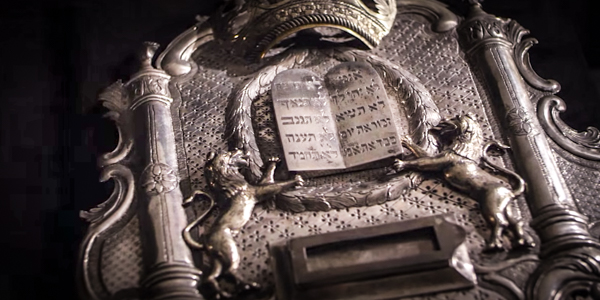Seven years in the making and billing itself as “the most technologically advanced museum in the world,” the Museum of the Bible is slated to open its doors to the public in November 2017. Six stories tall—atop two basement floors—crowned by a rooftop garden featuring biblical plants and vegetation, the museum has 430,000 square feet of exhibition space. Its location is formidable—just three blocks of the Capitol in the heart of Washington, D.C.
Five exhibit floors will house no fewer than 40,000 biblical and religious artifacts, including 500 “world-class artifacts” such as “writings dating to the time of Abraham [and] fragments of the Dead Sea Scrolls” that Museum officials characterize as priceless. On a lighter note, visitors will be able to view Bibles that belonged to Babe Ruth and Elvis Presley as well as the so-called “Lunar Bible,” the first Bible to travel through space.
The Museum also has made provisions for academic pursuits of the highest order, providing scholarly quarters and a conference center and awarding a grant for scholars to work on the creation of a new edition of the Greek-language New Testament. In fact, some 60 universities from around the world have joined forces with the Museum by taking part in its Scholars Initiative. At the same time, interactive digital technology and a “biblical world”—featuring Jerusalem and Nazareth peopled by holograms of biblical characters—as well as a children’s gallery ensure that the Museum will appeal to people of all ages and levels of knowledge and interest.
As Steve Bickley, the Museum’s vice president of marketing, recently told Fox News, the Museum of the Bible is not strictly oriented to promote biblical faith. One key objective is to demonstrate the vital cultural and social role the Bible has played in Western civilization and in the U.S. in particular. Said Bickley, “the goal is to show and to educate people about the many ways that the Bible has impacted America, not just our history but in terms of civil rights and social justice to fashion.”
The Museum promises, he added, an “immersive experience to people of all faiths, or no faith, and those who have never even picked up a Bible.” This broad stroke is also apparent in the Museum’s engagement of Bible-based faiths across the board, with Museum scholars deriving from a full range of Christian and Jewish backgrounds—testimony to the Museum’s decidedly non-sectarian spirit.
The Vatican—which hosted two of the Museum’s preview travelling exhibitions a few years back—is committed to installing a permanent exhibit of Catholic Bible artifacts in another year or so; that exhibit will draw on treasures from the Vatican library and Vatican museums. Plus, scholars associated with the Pontifical Biblical Commission and from the various Pontifical universities in Rome will lend their scholarship to Museum-sponsored research projects.
The Museum also is committed to interreligious collaboration. For example, Israeli scholars helped develop the Museum’s “augmented reality” Bible curriculum for youth. In addition, scholars and officials at Israel’s National Treasures department of the country’s Antiquities Authority are readying the provision of a dedicated gallery with biblical artifacts from the Holy Land.
The Museum was designed, built, and is being outfitted with the latest technology, drawing on architects and contractors whose portfolio includes the Smithsonian’s Museum of the American Indian and the National Museum of African American History and Culture. The firm responsible for the Museum’s audio-visual and interactive media component has a track record with Universal Studios Florida, Cirque de Soleil, the Hard Rock Hotels & Cafes, and Time Warner Center.
Clearly, no expense has been spared. Property, demolition, and construction costs alone topped $500,000. The Museum’s permanent collection of biblical artifacts is priceless. The story of the creation of the Museum of Bible, from start to almost finish, may be likened to the care and expenditure that went into the building of the great cathedrals of Europe, when the very best materials were used, and the best craftsmen were employed, alongside the best painters, sculptors, and stained glass window artists—only the best, and all for the greater glory of God.
Even as the Museum aims to appeal to people of all faiths or no faith at all, Museum Chairman Steve Green and his father David—who have committed their private fortune to building the Museum and purchasing the bulk of the artifacts—do not hide their commitment to their Christian faith. That faith that won their company, Hobby Lobby, a victory at the Supreme Court when the Green family prevailed against the contraceptive mandate of the Affordable Care Act.
When the Museum made its first nonprofit filing in 2010, it stated that its objective was “to bring to life the living word of God, to tell its compelling story of preservation, and to inspire confidence in the absolute authority and reliability of the Bible.” Last year, Steve Green told The Atlantic: “We want to share this book with people all over the world. And the more resources we have, the more we’re able to do that.”
Biblical engagement and literacy is on the decline in the U.S., with Western Europe even further behind. Between 2011 and 2016, research by the Barna Group has found, the number of “Bible skeptics” grew from 10 percent to 20 percent; in the same period, active Bible engagement dropped from 45 percent to 17 percent.
Surely this trend—this drop in belief in the divine authority of Scripture—is a significant backdrop as the Museum of the Bible opens its doors this fall. However, visitors need not be concerned about being preached at or proselytized. Steve Green and his stellar staff and collaborators will let the Bible in all its forms, and through its myriad related artifacts, speak for itself.
Last year, Museum President Cary Summers told The Atlantic what might well be considered the motto of the nation’s newest major museum. He expressed his hope that the Museum of the Bible will become “a beacon for all people to engage with the ideas and beauty of the Bible.”

